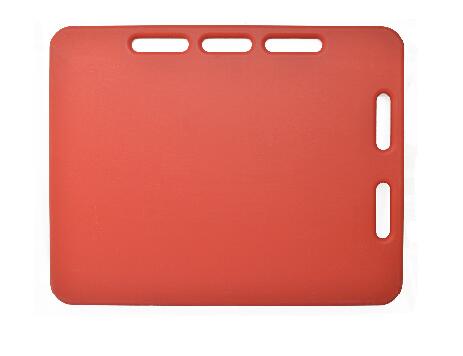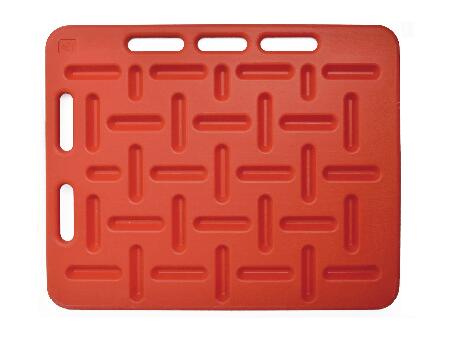Chemical method It is mainly to use some chemical substances that can inhibit cell division (ie, chemical inducers) to interfere with the normal division process of cells and achieve the intended purpose. The main inducers are cytochatgin B (CB): a metabolite of fungi. CB treatment can induce a series of cytological effects, such as changes in the cytoskeleton, multinucleation, destruction of microfilaments and the like. It is generally believed that CB specifically destroys microfilaments, eventually causing the disintegration of the contractile loop consisting of microfilaments of cell division, inhibiting cytoplasmic division, and preventing the release of polar bodies, thereby generating polyploidy. CB is a carcinogen and has poor water solubility. It is generally dissolved in 1% dimethyl sulfoxide (DMé„„SO), and after treatment, fertilized eggs are washed with seawater containing 1 DMSO to remove residual CB. 6-dimethylaminopurine (6-DMAP): an analog of puromycin that inhibits the phosphorylation of proteins and destroys the polymerization centers of microtubules by acting on specific enzymes to make microtubules unable to function. Formation so as to suppress the formation and release of the polar body. 6-DMAP is non-carcinogenic and has water activity. Physical law It is the application of physical factors in the cell division cycle that influences and interferes with the normal division of cells to achieve chromosome doubling. Common physical methods include temperature shock (including high and low temperature shock) and hydrostatic shock. Biological method In addition to chemical methods and physical methods, polyploids (ie, biological methods) can also be cultivated using shellfish distant hybridization. However, due to the complexity of seed selection, this method has not been applied in shellfishes, and it has been used in fish. The tetraploid of Pacific oyster and the diploid were successfully bred to produce triploid.
The lightweight, but very durable, Pig Sorting Panel produced by Honde is made of high-quality hard plastic to help workers easily move livestock such as pigs and sheep. We designed a product with circular holes in the top and side of the pig Sorting Panel, which made the operation of the pig sorting panel easy. The pig sorting panel is available in three different sizes, the largest size is 121 * 78mm and the weight is only 6.3kgs. If your order is large enough, we can also produce according to the drawings you provide. the pig sorting panel is ideal for large-scale farming equipment. Our pig sorting panel is light, small and ideal for young employees who can work with ease.
Pig Sorting Panel Pig Sorting Panel,Red Pig Sorting Panel,Plastic Pig Sorting Panel,Hard Plastic Panels For Pig,Sorting Panel,Sorting Hog Panels,Pig Sorting Board HuangHua FengYi Honde Metal Factory , https://www.farrowingcratesfromchina.com
Caffeine: Its effect is to increase intracellular Ca2+. Since the microtubules are sensitive to Ca2+ concentration, when the Ca2+ concentration is extremely low or higher than 10, the depolymerization of the microtubule dimer may be caused, thereby preventing cell division and thereby forming polyploidy.
Colchicine: It inhibits the assembly of microtubules, depolymerizes existing microtubules, prevents the formation of spindles or destroys the formed spindles, and doubles the chromosomes of cells without separating them. The inducer is widely used in plants and has been successfully applied in shellfish and other animals.
In addition, chemical agents such as polyethylene glycol (PEG) and calcium cyanide (CL) have a certain role in inhibiting cell separation and doubling chromosomes.
Temperature shock: The mechanism of action is that temperature changes cause changes in the intracellular enzyme configuration, which is not conducive to the enzymatic reaction, leading to the supply of ATP required to form spindles when cell division is blocked, so that the chromosome has been doubled Can't split. The temperature used varies from one species to another.
Hydrostatic pressure: The pressure generated by a special hydrostatic apparatus is applied to the treatment object. Its mechanism of action is to inhibit the formation of microfilaments and microtubules in the spindle and prevent the movement of chromosomes, thereby inhibiting cell division and forming polyploids.
In addition, electrical pulses can also induce polyploidy.
The tetraploid (T) and diploid (D) hybrids produce shellfish triploids, triploid rate can be as high as 100%, the method is simple, easy to operate, to avoid the physical and chemical treatment of the embryonic development, can improve the embryo The hatching rate and the survival rate of larvae are suitable for productive breeding.
In addition, allotriploids can be generated using tetraploid and heterodiploid hybrids. At present, allotriploid progeny have been successfully cultivated by the hybridization between the Pacific oyster tetraploid and the O. oyster diploid. 
